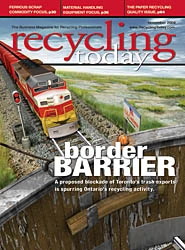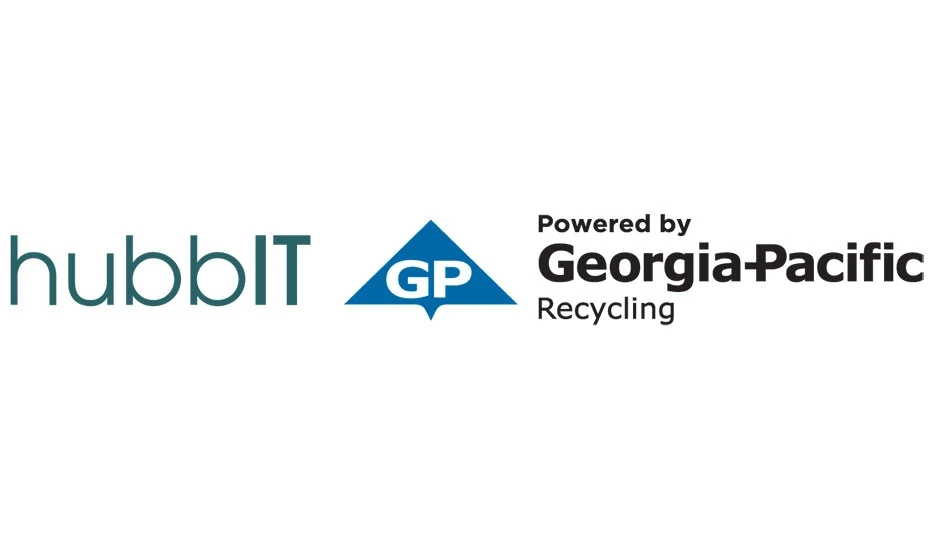Over the years, Evergreen Financial has interviewed hundreds of document destruction company owners and has seen the financial statements of many of their companies. In doing so, Evergreen has learned a number of facts or generalizations about the industry.
This article gives me the chance to share some of that general information with the readers of Secure Destruction Business, including a look at financial and operational procedures and the trends evident in these areas.
PUTTING TRUCKS ON THE ROAD
Trucks are the foundation of the industry. There are many types of trucks and many types of shredding methods. Most of my experience relates to mobile shredding trucks, also called "professional trucks," and so the comments in this article do not necessary apply to other types of trucks.
A "professional truck" would be one of the highly automated trucks with the following characteristics:
• A device to pick bins up off the ground
• Ability to shred at 3,000 pounds per hour or faster
• Ability to automatically unload the box of shredded
paper in a matter of minutes
• Cost from $190,000 to $225,000.
Other types of trucks also are commonly used in the industry, such as the Shred-Tech model 20, which generally does not have the ability to lift a bin off the ground and generally shreds from 1,000 to 1,500 pounds per hour.
A number of box trucks have a generator and a shredder in them. These trucks are generally more labor intensive and operate more slowly. Their potential monthly revenue is less, though I know of one company that gets as much revenue from its Shred-Tech model 20 as others get with the more expensive trucks.
In terms of ongoing expenses, a "professional truck" costs about $10,000 per month to keep in the field (debt service, drivers’ wages and benefits, insurance, fuel, etc.). Bins and consoles cost about $60 to $70 each.
On the other side of the ledger, a "professional truck" should generate $25,000 per month. (I know of companies that get $30,000 per month in revenue from slower trucks, so this is highly subjective). If the business has many rural accounts, revenue could be less than $20,000 because of the amount of drive time involved.
If the truck box holds a very limited amount of paper, or if it is time consuming to drop paper at the recycler, revenue, again, could be less than $20,000 per month.
Trucks that generate more than $25,000 per month in revenue may have some of the following characteristics: Companies may be baling their own paper, so that they never waste time traveling to the recycler; they may be in a concentrated setting, requiring less drive time between accounts; their trucks may shred longer than the normal eight hours per day; and they may be very effective sales people who are good at holding their prices higher than others.
GROWTH STRATEGIES
The key to building a substantial business is to place lots of bins each month (good companies place 40 to 100 per month). Good companies find lots of one-time "purge" jobs too. The normal methods of soliciting business include:
• Telephone directory ads
• Web site
• Telemarketing
• Direct mail
• Referral programs
• Salespeople
• Newspaper advertising
• Public relations
• Smart networking
• Proper "branding" of your trucks.
A systematic marketing program must not only be developed, but also adhered to. You must have a program that continues every month in some sort of systematic way. A company must reach out and get the customers it wants. The customers who find you may not always be the most profitable for you.
| Side Dish |
|
Keep an eye open for destroying "out of spec" products and electronic media in addition to paper. These are manufactured or printed products with a flaw or that are out of date or even counterfeit. In some cases certain products have to be destroyed because releasing them to the general public (or risking so by throwing them away) could be dangerous, such as police uniforms or products that are deemed to be unsafe. Some mobile shredding trucks will not be able to shred some out-of-spec products, especially those with a high metal or plastic content. |
You can delegate or even "outsource" many functions of your marketing program. The high growth companies have some sort of sales team. It may consist of two or three telemarketers who find leads for the management or of salespeople who can close on new business. It may consist of outside sales people, who find and close their own leads.
It can take some effort to recruit excellent sales people. Recruiting them from other companies that already know where all the paper is, such as document storage companies, is a good strategy. Competing companies that have recently had a change in management are also good sources. The best example of this is independent but successful companies that have been acquired. Some of their salespeople might be uncomfortable working for a larger company.
KEEPING THE INK BLACK
Document destruction firms have three normal sources of revenue: route revenue, purge revenue and recycling revenue. For startups, the purge and route revenues are about the same and the recycling revenue is fairly low (about 5 percent of overall revenue). For mature companies, route revenue approaches three times purge revenue. Recycling revenue stays about 5 percent until a baler is purchased, at which time it can increase to from 10 percent to 15 percent of total revenue.
Route revenue is the lifeblood of the business. The greatest feature of this segment is that most of the revenue recurs monthly. Larger accounts, such as hospitals, can be harder to keep because such accounts go out to bid periodically. Smaller accounts are generally less susceptible to pricing pressure.
For many document-shredding businesses that are less than one year old, purge revenue might be as high as 50 percent of total revenue. Mature businesses with substantial routes probably enjoy purge revenue of from 20 percent to 30 percent of total revenue. Purge revenue can still increase each month and each year, even as it decreases as a percentage of total revenue.
Sponsored Content
Labor that Works
With 25 years of experience, Leadpoint delivers cost-effective workforce solutions tailored to your needs. We handle the recruiting, hiring, training, and onboarding to deliver stable, productive, and safety-focused teams. Our commitment to safety and quality ensures peace of mind with a reliable workforce that helps you achieve your goals.
Sponsored Content
Labor that Works
With 25 years of experience, Leadpoint delivers cost-effective workforce solutions tailored to your needs. We handle the recruiting, hiring, training, and onboarding to deliver stable, productive, and safety-focused teams. Our commitment to safety and quality ensures peace of mind with a reliable workforce that helps you achieve your goals.
Sponsored Content
Labor that Works
With 25 years of experience, Leadpoint delivers cost-effective workforce solutions tailored to your needs. We handle the recruiting, hiring, training, and onboarding to deliver stable, productive, and safety-focused teams. Our commitment to safety and quality ensures peace of mind with a reliable workforce that helps you achieve your goals.
Sponsored Content
Labor that Works
With 25 years of experience, Leadpoint delivers cost-effective workforce solutions tailored to your needs. We handle the recruiting, hiring, training, and onboarding to deliver stable, productive, and safety-focused teams. Our commitment to safety and quality ensures peace of mind with a reliable workforce that helps you achieve your goals.
Sponsored Content
Labor that Works
With 25 years of experience, Leadpoint delivers cost-effective workforce solutions tailored to your needs. We handle the recruiting, hiring, training, and onboarding to deliver stable, productive, and safety-focused teams. Our commitment to safety and quality ensures peace of mind with a reliable workforce that helps you achieve your goals.
An average purge job generates $300 to $400. Some companies have minimum charges on purge jobs. Companies with slower trucks have a productivity disadvantage on jobs with thousands of boxes. It is common for someone with two or three fast trucks to win the bid and to complete the job with multiple trucks on site in one phase.
It is also common for plant-based destruction firms with stationary shredders to take some of those jobs. Big purge jobs are obviously price competitive. Big purge jobs are also time sensitive. I know of one document destruction company that consistently wins bids for large purge jobs though it is not the low bidder because it can do the job faster than competitors.
The sale of shredded paper does not add up to much until substantial volume builds up and a baler can be afforded. Baled paper can sell for some $50 per ton more than loose paper. Most studies suggest a company needs 100 to 150 tons per month to justify baling. Recycling revenue is generally less than 3 cents per pound loose and more than 5 cents per pound baled. One hundred tons would equate to $10,000 per month in recycling revenue, depending on market conditions.
The sale of paper is not a major profitability factor until a company is handling more than 150 tons per month. Once this volume is reached, a company should strongly consider adding a baling operation.
The ongoing costs of a baling operation include securing 5,000 to 10,000 square feet of space. A lower-volume, pre-owned baler may cost $50,000 to $100,000, while electrical work to install it can cost up to $10,000 if the building isn’t wired properly.
A pit for an infeed conveyor can also cost $10,000 to install. Depending on the type of shredded paper produced, a dust collection system can be a major expense too.
A big factor in determining when to get into baling involves the cost of hauling paper to the recycling plant. If it takes drivers 90 minutes to go to the recycler to dump paper and get back to their route, then that lost productivity becomes very important. If three trips to the recycler are being conducted per week by three trucks in a fleet, a company is losing about two days per week of productivity by not baling. That is 40 percent of one truck’s capacity.
As in any business, it can take longer than anticipated to build a company, and it takes professional effort to grow.
If a sales and marketing program generated an increase in revenue in each of the past few months, that growth will likely continue. With a professional marketing program, that growth may accelerate further. It is difficult to go in debt for $195,000 for a new truck, and it is even harder to do that twice a year. But do it if a successful marketing program and the resulting growth dictate it.
The lessons listed above I have garnered from talking to those in the business for which I have financed equipment. I hope you can apply some of this information to your business. n
The author is with Evergreen Financial, Portland, Ore., and has been financing equipment for companies in the document destruction industry since 1998. He is a NAID member and was the sponsor of the Shredding 101 session at the 2004 NAID conference. He can be contacted at (800) 239-3814.
| Keep on Trucking |
|
Calculating the capacity of mobile shredding trucks can be done several ways, including the number of container tips per month, the number of stops per month and the number of route customers. A truck should be able to service from 600 to 800 tips per month or even 1,000 tips per month at the maximum. Divided by 20 days, this equates to 30 to 40 tips per day. Multiply the number of tips by revenue per tip and that provides a monthly revenue target from routes. This formula does not apply to hospitals or big companies. The pricing in these accounts can be all over the board. Another way to look at it is by the number of stops per day. Depending upon the drive time and purge time, a truck might make between 12 and 20 stops per day. Many of the stops have multiple bins. Six hundred tips may require 400 bins to be placed. Divide that by the number of bins you place monthly to see how long it takes to get a truck up to capacity. Average revenue per customer is reported to be between $75 and $150 per month. Divide your goal for the number of months to get a truck up to capacity by the number of customers you need to see how many new customers you need to add each day and each month. |
Get curated news on YOUR industry.
Enter your email to receive our newsletters.

Explore the November 2004 Issue
Check out more from this issue and find your next story to read.
Latest from Recycling Today
- ReMA opposes European efforts seeking export restrictions for recyclables
- Fresh Perspective: Raj Bagaria
- Saica announces plans for second US site
- Update: Novelis produces first aluminum coil made fully from recycled end-of-life automotive scrap
- Aimplas doubles online course offerings
- Radius to be acquired by Toyota subsidiary
- Algoma EAF to start in April
- Erema sees strong demand for high-volume PET systems






